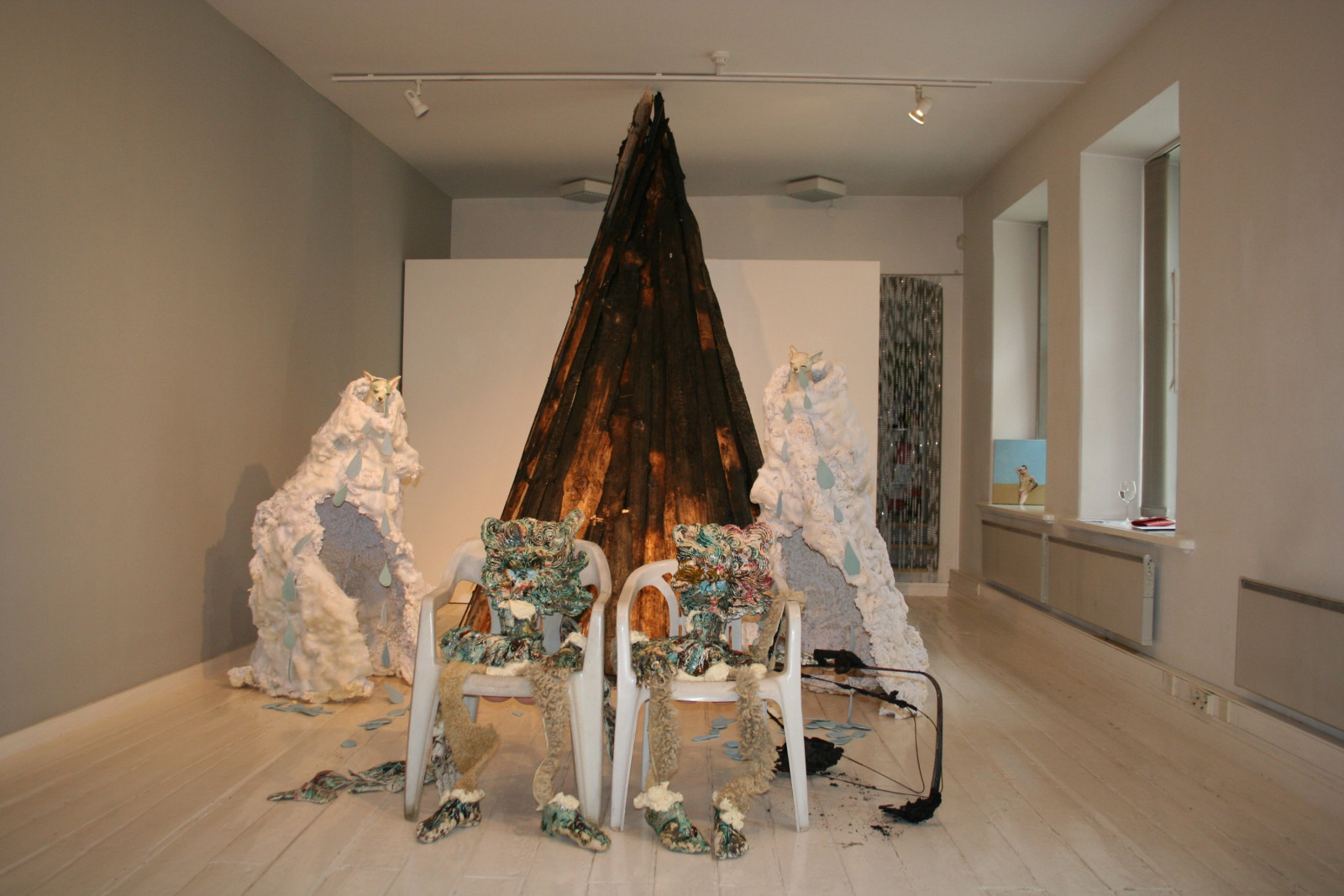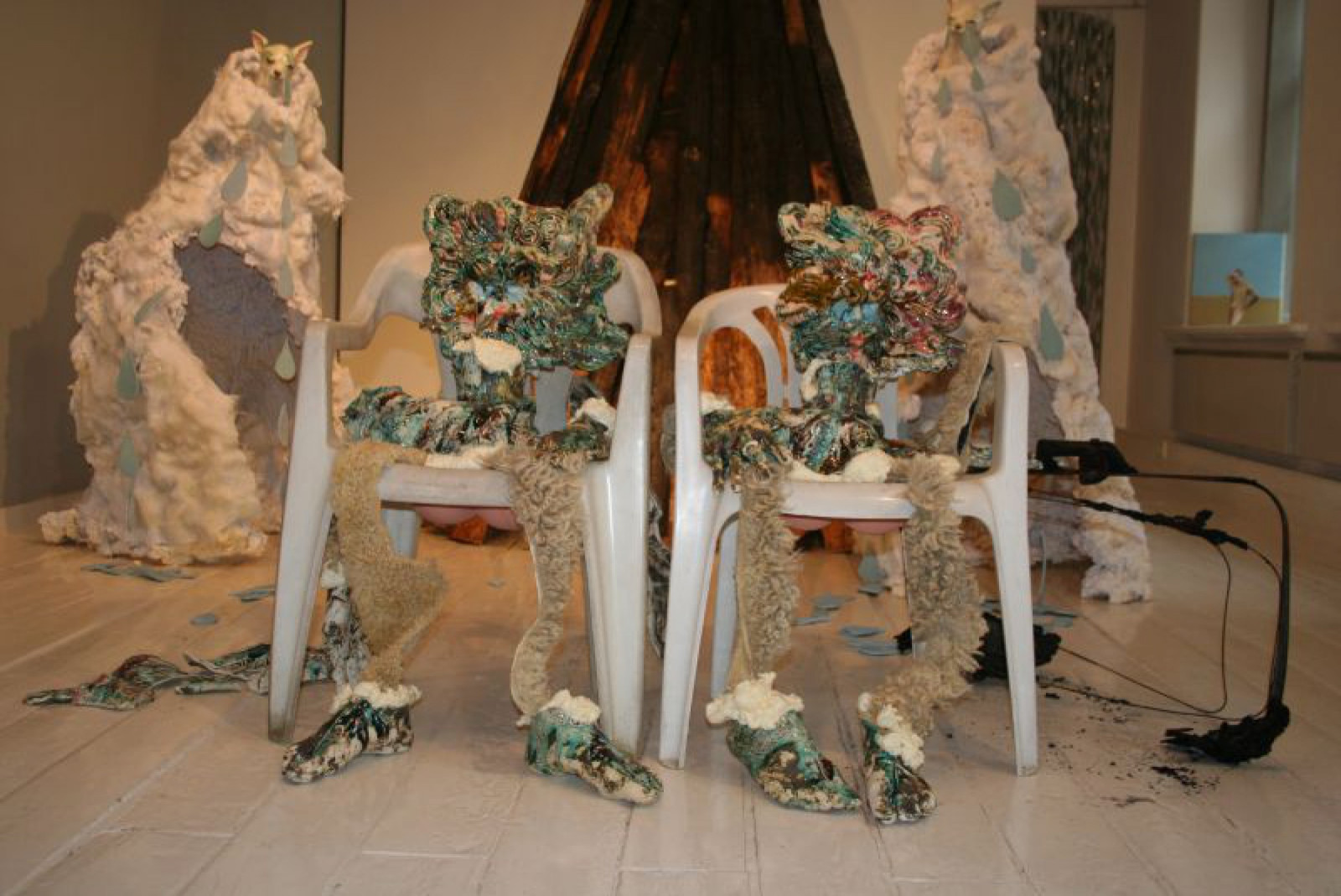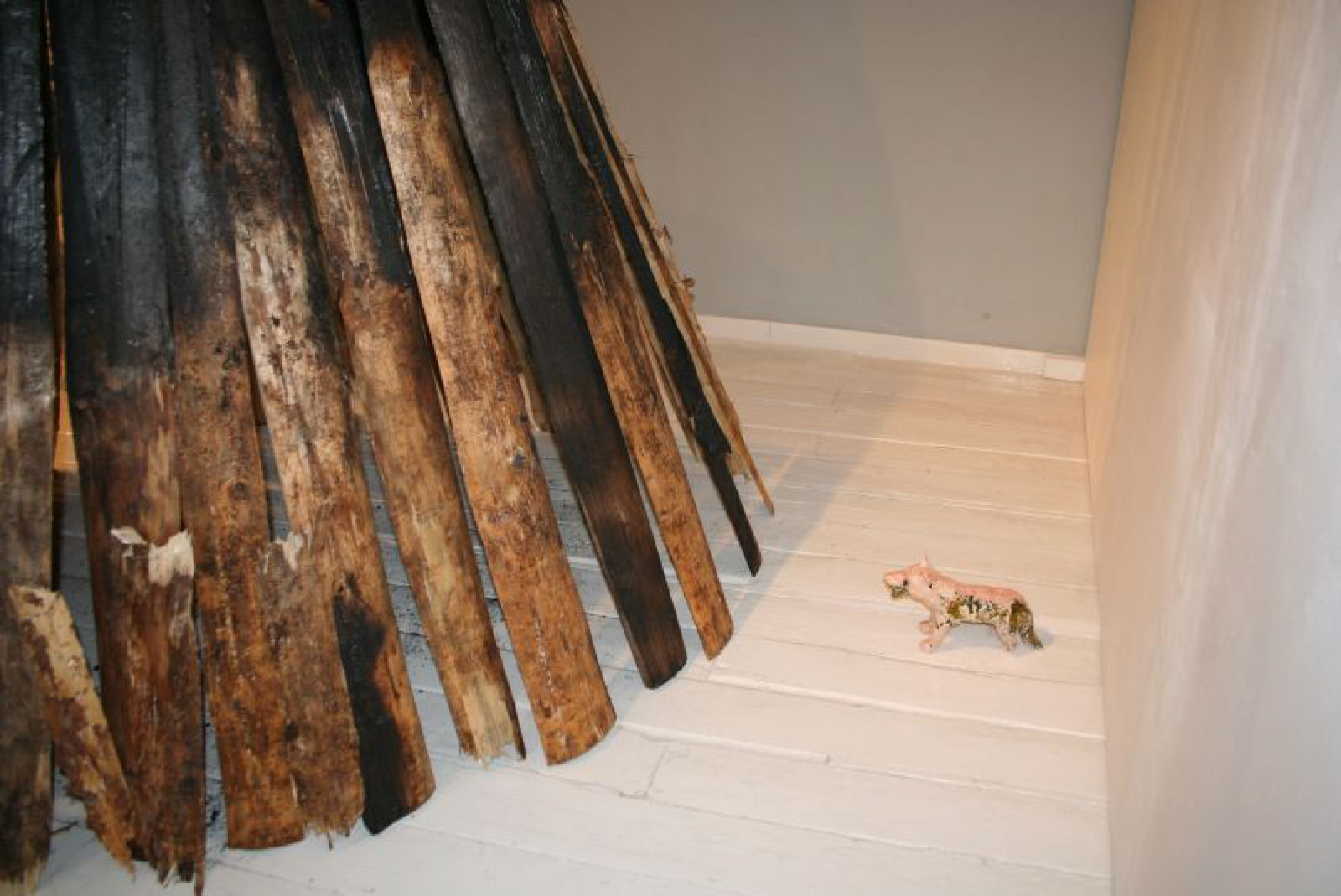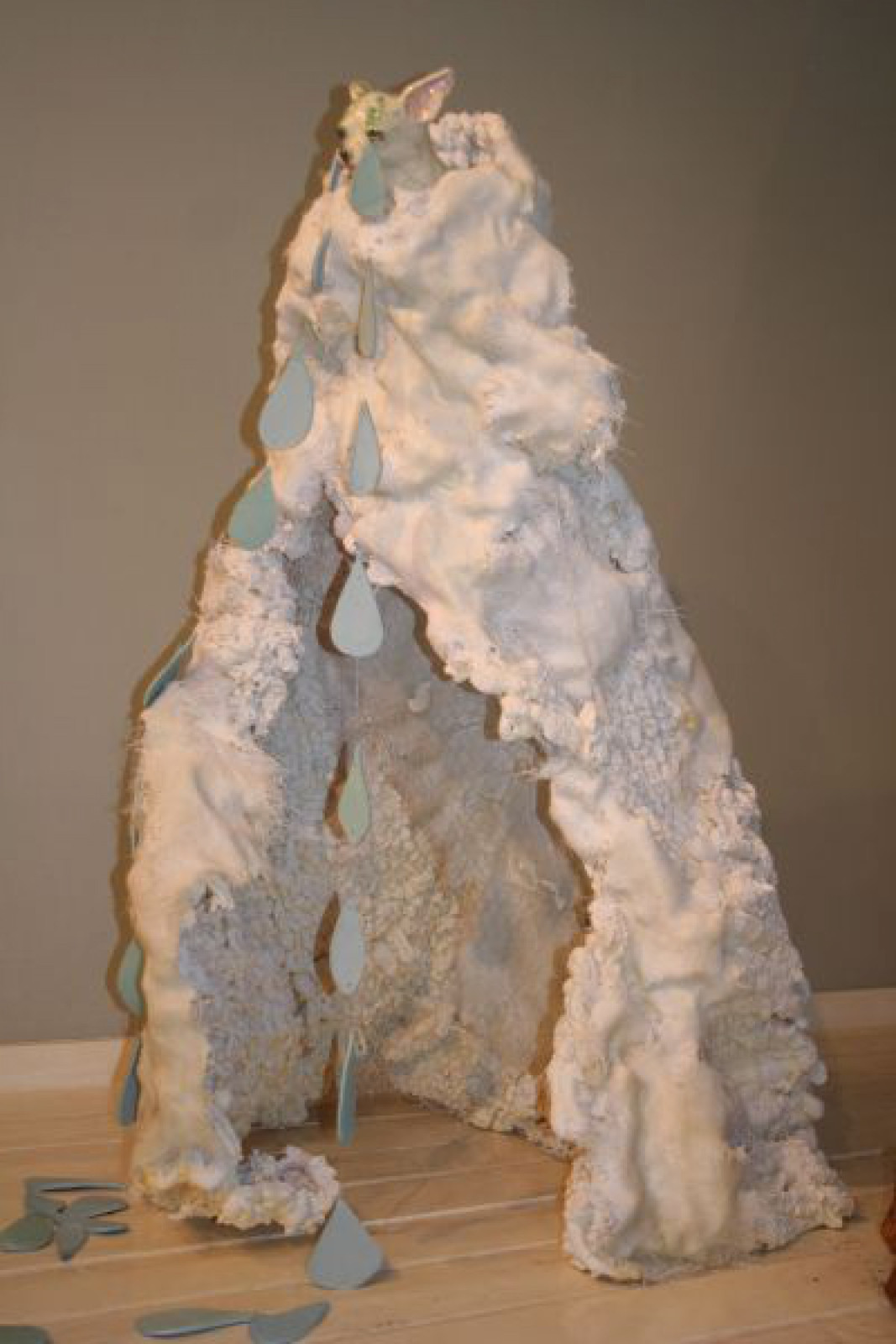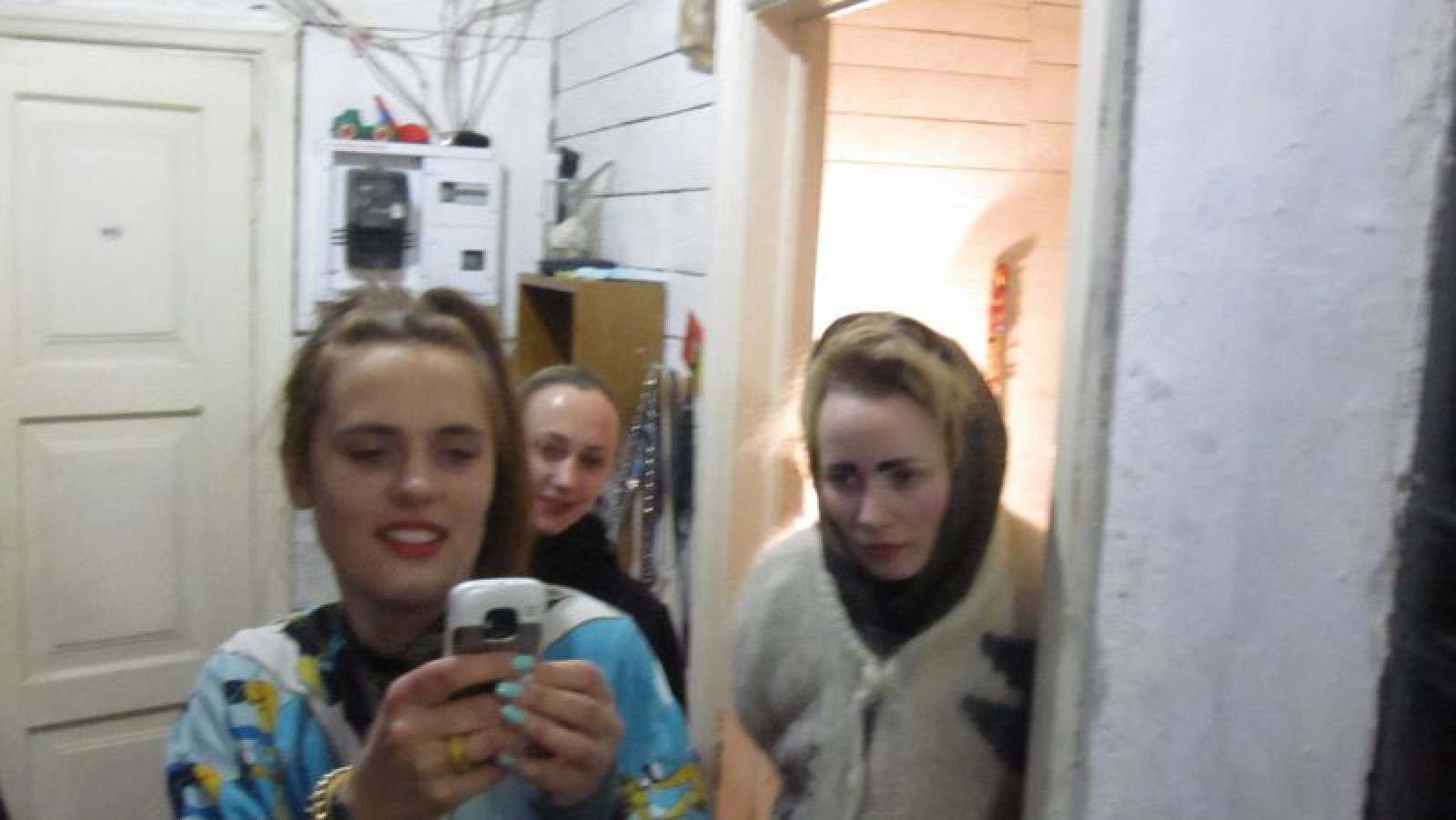Kris Lemsalu/Edith Karlson 'Being Together'
-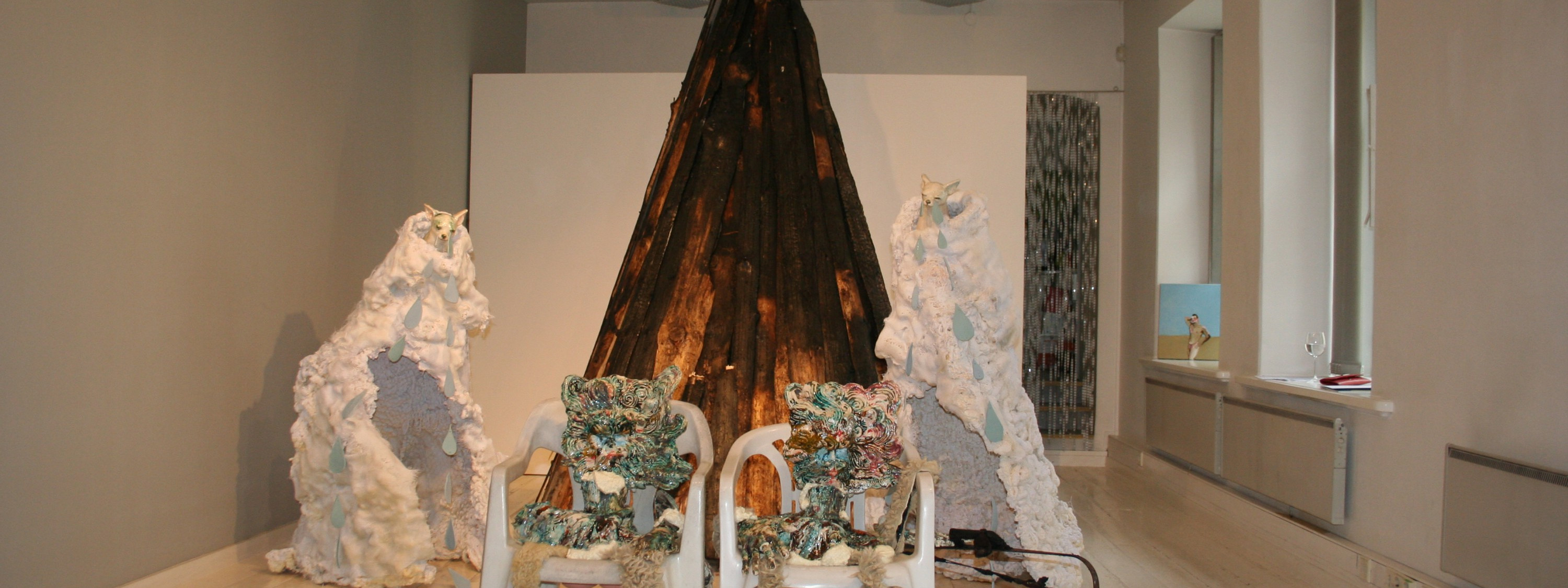
selected works
View: ,installation views
View: ,A man and a woman are strolling together through familiar architecture of an(y) airport, holding hands, laughing, casually stopping by the vitrines of tax free fashion boutiques. In the city, a group of homeless people congregate outside of the supermarket, one of them plays guitar, other two engage in a passionate argument. Uptown, people assemble inside and outside of the newly-opened art fair location; buying, selling, socializing, criticizing and protesting. Two artists meet in a studio workshop. They contemplate a possibility of accepting an offer to work on an exhibition together. They think about what it would be like to combine their ideas or share a gallery space. They consider the dangers of compromising and the benefits of collective production. There are more meetings later—with a gallerist, with a curator, with critics, and finally, an artist dinner and a private view. In the case of success, time will be spent with collectors, other gallerists, and more curators and critics. Possibly, they will spend more time making work together in the future. In either case, they will have to figure out a way of being together—with each other, with others—in a myriad of social and private arrangements. The studio is quiet yet tense; collaborative work balances between two individual powers. The gallery is crowded with private view participants, each adapting to the psycho-geography of the space. It appears that in any given space, physical or political, “being together”, co-existing, and assemblage always assume some sort of a role play or an attempt at denying it. Similarly, it may be that there is productive potential in acknowledging the pretense behind modes of “being together”. Taking collaboration as a currency used in art discourse and corporate branding ideologies (“Nokia—connecting people”), the artists address the notion of coexistence as a sort of insecurity. They build a fairytale-like scenario revealing the anxieties that adopting a social responsibility of “being together” would imply. A yurt filled with animals takes center stage, framed by two guards (guardians?) on one hand and a wolf that potentially endangers them on the other. “Being together” emerges in all of its self-doubt—coexistence defined by opposition to a mutual enemy, coexistence as a fear of loneliness, coexistence as a need to belong. The artists’ position seems not that of undermining cynicism or naive acceptance. Rather they take a role of an “analyst [who] nods and lets the analysand move on,” understanding that indicating a problem is valuable not as a potential for a resolution, but as an initiation of struggle.
Reiview in EPL 16.06.2012
